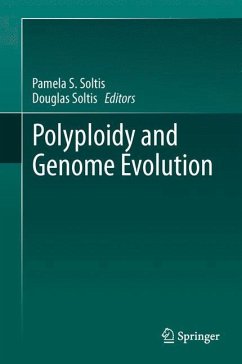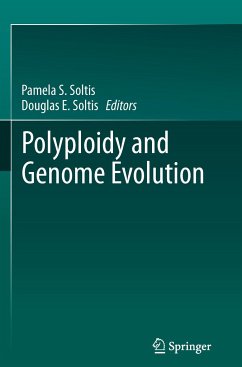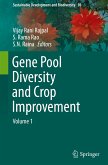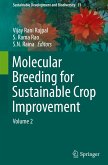Polyploidy - whole-genome duplication (WGD) - is a fundamental driver of biodiversity with significant consequences for genome structure, organization, and evolution. Once considered a speciation process common only in plants, polyploidy is now recognized to have played a major role in the structure, gene content, and evolution of most eukaryotic genomes. In fact, the diversity of eukaryotes seems closely tied to multiple WGDs. Polyploidy generates new genomic interactions - initially resulting in "genomic and transcriptomic shock" - that must be resolved in a new polyploid lineage. This process essentially acts as a "reset" button, resulting in genomic changes that may ultimately promote adaptive speciation.
This book brings together for the first time the conceptual and theoretical underpinnings of polyploid genome evolution with syntheses of the patterns and processes of genome evolution in diverse polyploid groups. Because polyploidy is most common and best studied in plants, the book emphasizes plant models, but recent studies of vertebrates and fungi are providing fresh perspectives on factors that allow polyploid speciation and shape polyploid genomes. The emerging paradigm is that polyploidy - through alterations in genome structure and gene regulation - generates genetic and phenotypic novelty that manifests itself at the chromosomal, physiological, and organismal levels, with long-term ecological and evolutionary consequences.
This book brings together for the first time the conceptual and theoretical underpinnings of polyploid genome evolution with syntheses of the patterns and processes of genome evolution in diverse polyploid groups. Because polyploidy is most common and best studied in plants, the book emphasizes plant models, but recent studies of vertebrates and fungi are providing fresh perspectives on factors that allow polyploid speciation and shape polyploid genomes. The emerging paradigm is that polyploidy - through alterations in genome structure and gene regulation - generates genetic and phenotypic novelty that manifests itself at the chromosomal, physiological, and organismal levels, with long-term ecological and evolutionary consequences.
From the reviews:
"This book by Soltis and Soltis can be fully recommended to students, teachers and advanced researchers or other professionals in all fields of plant science, and not only in evolutionary genetics, for whom it will provide a valuable overview of the recent advances made in the field of the polyploidy-based evolution of eukaryotes, and notably of angiosperms." (Eric Jenczewski and Karine Alix, Annals of Botany, Vol. 113 (7), May, 2014)
"This book by Soltis and Soltis can be fully recommended to students, teachers and advanced researchers or other professionals in all fields of plant science, and not only in evolutionary genetics, for whom it will provide a valuable overview of the recent advances made in the field of the polyploidy-based evolution of eukaryotes, and notably of angiosperms." (Eric Jenczewski and Karine Alix, Annals of Botany, Vol. 113 (7), May, 2014)








